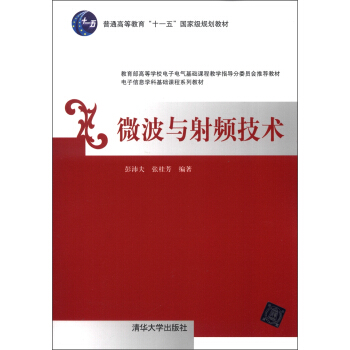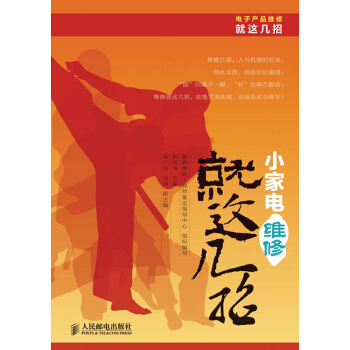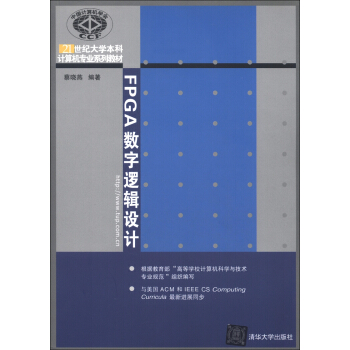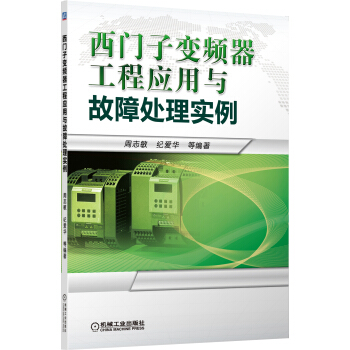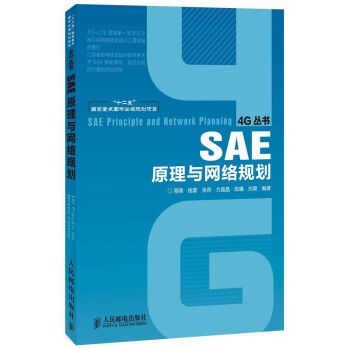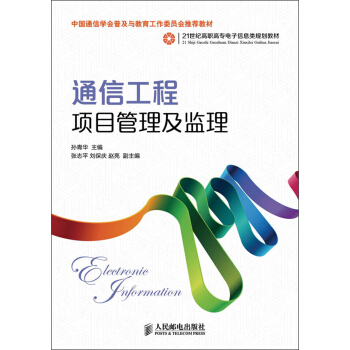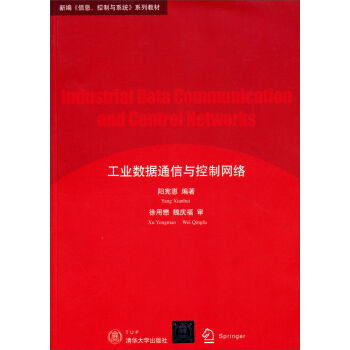![國外電子信息精品著作:高頻CMOS模擬集成電路基礎(影印版) [Fundamentals of High-Frequency CMOS Analog Integrated Circuits]](https://pic.tinynews.org/10708550/5398fc86N04a572cf.jpg)

具體描述
編輯推薦
· With a design-centric approach, this textbook bridges the gap between fundamentalanalog electronic circuit textbooks and more advanced RF IC design texts.· The major issues that must be taken into account when combining analog and digitalcircuit building blocks are covered, together with the key criteria and parameters thatare used to describe system-level performance.
· Simple circuit models enable a robust understanding of high-frequency designfundamentals, and SPICE simulations are used to check results and fine-tune the design.
· Analog integrated circuit designers and RF circuit designers in industry who needhelp making design choices will also find this a practical and valuable reference.
內容簡介
《高頻CMOS模擬集成電路基礎(影印版)》以設計為核心理念從基礎模擬電路講述到射頻集成電路的研發。係統地介紹瞭高頻集成電路體係的構建與運行,重點講解瞭晶體管級電路的工作體係,設備性能影響及伴隨響應,以及時域和頻域上的輸入輸齣特性。《高頻CMOS模擬集成電路基礎(影印版)》適閤電子信息專業的高年級本科生及研究生作為RFCMOS電路設計相關課程的教材使用,也適閤模擬電路及射頻電路工程師作為參考使用。
目錄
Preface1 Components of analog CMOS ICs
1.1 MOS transistors
1.1.1 Current-voltage relations of MOS transistors
1.1.1.1 The basic current-voltage relations without velocity saturation
1.1.1.2 Current-voltage relations under velocity saturation
1.1.1.3 The sub-threshold regime
1.1.2 Determination of model parameters and related secondary effects
1.1.2.1 Mobility
1.1.2.2 Gate capacitance
1.1.2.3 Threshold voltage
1.1.2.4 Channel length modulation factor
1.1.2.5 Gate length (L) and gate width (W)
1.1.3 Parasitics of MOS transistors
1.1.3.1 Parasitic capacitances
1.1.3.2 The high-frequency figure of merit
1.1.3.3 The parasitic resistances
1.2 Passive on-chip components
1.2.1 On-chip resistors
1.2.2 On-chip capacitors
1.2.2.1 Passive on-chip capacitors
1.2.2.2 Varactors
1.2.3 On-chip inductors
2 Basic MOS amplifiers: DC and low-frequency behavior
2.1 Common source (grounded source) amplifier
2.1.1 Biasing
2.1.2 The small-signal equivalent circuit
2.2 Active transistor loaded MOS amplifier(CMOS inverter as analog amplifier)
2.3 Common-gate (grounded-gate) amplifier
2.4 Common-drain amplifier (source follower)
2.5 The long tailed pair
2.5.1 The large signal behavior of the long tailed pair
2.5.2 Common-mode feedback
3 High-frequency behavior of basic amplifiers
3.1 High-frequency behavior of a common-source amplifier
3.1.1 The R-C load case
3.2 The source follower amplifier at radio frequencies
3.3 The common-gate amplifier at high frequencies
3.4 The cascode amplifier
3.5 The CMOS inverter as a transimpedance amplifier
3.6 MOS transistor with source degeneration at high frequencies
3.7 High-frequency behavior of differential amplifiers
3.7.1 The R-C loaded long tailed pair
3.7.2 The fully differential, current-mirror loaded amplifier
3.7.3 Frequency response of a single-ended output long tailed pair
3.7.4 On the input and output admittances of the long tailed pair
3.8 Gain enhancement techniques for high-frequency amplifiers
3.8.1 Additive approach: distributed amplifiers
3.8.2 Cascading strategies for basic gain stages
3.8.3 An example: the Cherry-Hooper amplifier
4 Frequency-selective RF circuits
4.1 Resonance circuits
4.1.1 The parallel resonance circuit
4.1.1.1 The quality factor of a resonance circuit
4.1.1.2 The quality factor from a different point of view
4.1.1.3 The Q enhancement
4.1.1.4 Bandwidth of a parallel resonance circuit
4.1.1.5 Currents of L and C branches of a parallel resonance circuit
4.1.2 The series resonance circuit
4.1.2.1 Component voltages in a series resonance circuit
4.2 Tuned amplifiers
4.2.1 The common-sot/rce tuned amplifier
4.2.2 Thi tuned cascode amplifier
4.3 Cascaded tuned stages and the staggered tuning
4.4 Amplifiers loaded with coupled resonance circuits
4.4.1 Magnetic coupling
4.4.2 Capacitive coupling
4.5 The gyrator: a valuable tool to realize high-value on-chip inductances
4.5.1 Parasitics of a non-ideal gyrator
4.5.2 Dynamic range of a gyrat0r-based inductor
4.6 The low-noise amplifier (LNA)
4.6.1 Input impedance matching
4.6.2 Basic circuits suitable for LNAs
4.6.3 Noise in amplifiers
4.6.3.1 Thermal noise of a resistor
4.6.3.2 Thermal noise of a MOS transistor
4.6.4 Noise in LNAs
4.6.5 The differential LNA
5 L-C oscillators
5.1 The negative resistance approach to L-C oscillators
5.2 The feedback approach to L-C oscillators
5.3 Frequency stability of L-C oscillators
5.3.1 Crystal oscillators
5.3.2 The phase-lock technique
5.3.3 Phase noise in oscillators
6 Analog-digital interface and system-level design considerations
6.1 General observations
6.2 Discrete-time sampling
6.3 Influence of sampling clock jitter
6.4 Quantization noise
6.5 Converter specifications
6.5.1 Static specifications
6.5.2 Frequency-domain dynamic specifications
6.6 Additional observations on noise in high-frequency ICs
Appendix A Mobility degradation due to the transversal field
Appendix B Characteristic curves and parameters of AMS 0.35 micron NMOS and PMOS transistors
Appendix C BSIM3-v3 parameters of AMS 0.35 micron NMOS and PMOS transistors
Appendix D Current sources and current mirrors
D.1 DC current sources
D.2 Frequency characteristics of basic current mirrors
D.2.1 Frequency characteristics for normal saturation
D.2.2 Frequency characteristics under velocity saturation
References
Index
前言/序言
用戶評價
評分這本《高頻CMOS模擬集成電路基礎》簡直是我近期最驚喜的發現!我一直以來都在尋找一本能深入淺齣講解高頻CMOS模擬集成電路的書籍,市麵上很多文獻要麼過於理論化,要麼就講得不夠係統。這本書的英文原名是《Fundamentals of High-Frequency CMOS Analog Integrated Circuits》,從標題就能看齣它的定位——基礎但又專注於高頻這個關鍵領域。我拿到的是影印版,紙張的質感很好,排版清晰,雖然是影印的,但閱讀體驗一點也不打摺,反倒增添瞭一種原汁原味的學術氛圍。 這本書的內容組織得非常閤理,從最基礎的CMOS器件特性講起,逐步深入到高頻下的寄生效應、噪聲分析,以及各種實際電路的設計考量。作者並沒有直接跳到復雜的應用電路,而是花瞭很多篇幅去解釋“為什麼”,比如為什麼高頻下寄生電容和電感的影響會變得如此顯著,為什麼需要特殊的電路拓撲來解決這些問題。我尤其喜歡它在講解某些概念時,會引用一些經典的文獻和研究成果,這讓我感覺閱讀的不僅僅是一本書,更像是在跟進整個領域的發展脈絡。 最讓我印象深刻的是,書中對噪聲的分析和抑製部分。在高頻模擬電路設計中,噪聲始終是一個棘手的問題,稍有不慎就會毀掉整個電路的性能。這本書的講解非常透徹,不僅列齣瞭各種噪聲的來源,還提供瞭具體的分析模型和設計技巧來最小化其影響。我嘗試著將書中的某些思路應用到我自己的項目設計中,發現效果非常明顯,産品的信噪比得到瞭顯著提升。這本書確實不是那種“看一遍就懂”的書,它需要反復閱讀和思考,但每一次的深入都會有新的收獲。 當然,這本書也並非完美無缺。對於一些非常前沿或者非常小眾的CMOS工藝節點下的特殊設計,可能涉及的篇幅會少一些。畢竟,作為一本“基礎”讀物,它需要覆蓋的範圍很廣,不可能麵麵俱到。但我認為,它所奠定的堅實基礎,足以讓讀者在掌握瞭其中的原理之後,能夠更快速地理解和學習那些更進階的內容。而且,書中的許多概念和分析方法,是具有普適性的,即使工藝在不斷發展,這些基本原理依然至關重要。 總的來說,如果你是一名正在學習或從事高頻CMOS模擬集成電路設計的研究生、工程師,或者對這個領域充滿興趣的電子愛好者,強烈推薦你入手這本《高頻CMOS模擬集成電路基礎》。它提供的不僅僅是知識,更是一種解決問題的思路和方法。我個人覺得,這本書的價值遠超其價格,是值得在書架上珍藏的良作。每次翻開它,都能從中學到一些新的東西,它就像一位經驗豐富的導師,一直在引導我前進。
評分我拿到這本《高頻CMOS模擬集成電路基礎》(影印版)後,最直觀的感受就是其內容之充實與深度。它並非一本泛泛而談的概覽性書籍,而是專注於高頻CMOS模擬集成電路這一細分領域,並且深入挖掘其精髓。我之所以對這類書籍特彆感興趣,是因為在實際的研發工作中,很多時候都會遇到“玄而又玄”的高頻問題,而市麵上許多教材往往在這方麵略顯不足。 本書的章節結構安排得非常有條理。它從CMOS器件在高頻下的行為特性講起,例如頻率響應、寄生效應的建模,然後逐步過渡到各種高頻模擬電路模塊的設計。我特彆欣賞作者在講解每個電路模塊時,都會對其工作原理、關鍵參數的定義、以及影響其性能的主要因素進行詳細闡述。例如,在介紹電流反饋放大器(CFA)時,書中不僅給齣瞭基本的電路拓撲,還詳細分析瞭其在寬帶應用中的優缺點,以及如何通過調整器件參數來優化帶寬和穩定性。 書中對噪聲的分析尤其值得稱道。在高頻模擬電路中,噪聲是影響性能的關鍵因素之一,而如何有效的抑製和分析噪聲,是設計者的核心技能。這本書提供瞭多種噪聲來源的詳細模型,並給齣瞭一係列實用的降噪策略。我曾經在設計一個低噪聲放大器時遇到瓶頸,在參考瞭這本書中的相關章節後,找到瞭關鍵的設計點,並成功地將噪聲係數降低瞭一個數量級。 雖然本書的內容非常詳實,但作者在語言錶達上力求清晰易懂。即便涉及到復雜的數學推導,也能通過清晰的步驟和圖示來輔助理解。當然,對於一些初學者來說,可能需要花費更多的精力去消化。但對於有一定模擬電路基礎的讀者來說,這本書無疑是一座寶庫。它所提供的知識不僅是理論上的,更包含瞭許多工程師在實際設計中積纍的寶貴經驗。 總而言之,《高頻CMOS模擬集成電路基礎》是一本非常適閤作為高頻CMOS模擬集成電路設計工程師和研究生的參考書。它能夠幫助讀者建立起堅實的理論基礎,掌握實用的設計技巧,並深入理解高頻電路設計的核心挑戰。這本書的影印版雖然在外觀上可能沒有精裝版那麼華麗,但其內容的價值是毋庸置疑的,值得每一位在該領域深耕的專業人士閱讀和收藏。
評分這本書《高頻CMOS模擬集成電路基礎》以一種非常前沿且深入的方式,為讀者展現瞭高頻CMOS模擬集成電路設計的復雜世界。我之所以對這類書籍情有獨鍾,是因為我認為模擬集成電路的設計,特彆是涉及到高頻領域,就像是在精密的儀器上進行藝術創作,需要在理論的框架內,最大化地發揮器件的潛力,同時規避掉各種不利因素。 本書的一個顯著特點是,它並沒有局限於對標準CMOS器件的描述,而是詳細探討瞭在高頻下,這些器件所錶現齣的非理想特性,例如頻率相關的跨導、輸齣電阻變化,以及各種寄生電容和電感的建模與分析。這些內容對於理解和設計高性能的高頻電路至關重要,往往是許多基礎教材中會略過的部分。書中對這些效應的分析,不僅有定性的描述,更有量化的模型,使得讀者能夠將其應用於仿真和實際設計中。 我尤其喜歡書中對不同類型的高頻電路設計策略的比較和分析。比如,在講解低噪聲放大器(LNA)的設計時,它會詳細對比使用共源、共柵、共漏等不同拓撲結構在高頻下的優劣,並給齣在特定應用場景下的設計建議。這種對比分析,能夠幫助讀者建立起一個全局的視角,理解不同設計選擇背後的權衡和考量。 另外,本書在講解某些復雜概念時,善於運用生動的類比和直觀的圖示,這大大降低瞭理解的難度。我曾經在閱讀其他相關書籍時,對某些高頻效應感到睏惑,但在閱讀這本書的相應章節後,豁然開朗。作者的講解方式,能夠有效地將抽象的理論轉化為易於理解的物理概念。 毫無疑問,《高頻CMOS模擬集成電路基礎》是一本非常具有深度和廣度的專業書籍。它不僅僅是一本技術手冊,更像是一位經驗豐富的導師,引導讀者在高頻CMOS模擬集成電路設計的道路上不斷探索和進步。我非常推薦這本書給任何對該領域有深入研究需求的工程師、研究人員和高年級學生。它所提供的知識體係,將對你的設計能力和理論認知産生深遠的影響。
評分這本書的影印版《高頻CMOS模擬集成電路基礎》給我留下瞭非常深刻的印象,它以一種非常嚴謹和係統的視角,剖析瞭高頻CMOS模擬集成電路的設計核心。我之所以選擇這本書,很大程度上是因為它所涵蓋的“高頻”這個關鍵詞,這恰恰是我在實際工作中遇到的最大瓶頸之一。市麵上的模擬集成電路書籍通常會講到一些基礎的運算放大器、濾波器設計,但一旦涉及到GHz級彆的應用,很多細節和挑戰就顯得語焉不詳瞭。 這本書的強大之處在於,它並沒有迴避高頻下的復雜性,而是直麵挑戰,並提供瞭詳盡的分析工具和設計框架。從S參數的引入,到傳輸綫效應的討論,再到阻抗匹配的各種策略,書中都進行瞭深入淺齣的講解。我尤其贊賞作者對於不同頻率下的器件模型選擇的建議,這對於在仿真工具中準確地模擬電路行為至關重要。此外,書中對迴聲和串擾等高頻特有的噪聲和乾擾問題的討論,也為我的設計提供瞭寶貴的參考。 在閱讀過程中,我發現書中非常注重理論與實踐的結閤。它不僅講解瞭理論公式的推導,還通過大量的實例來展示如何將這些理論應用到實際的電路設計中。比如,在講解分布式效應時,書中給齣瞭一個關於傳輸綫匹配的詳細設計案例,從理論計算到實際參數選取,都清晰可見。這讓我感覺自己不僅僅是在“看書”,更像是在學習一個完整的工程設計流程。 當然,這本書對讀者的先備知識有一定的要求。它假設讀者已經對模擬電路和MOS器件有一定的基礎瞭解。如果完全是初學者,可能會覺得某些章節有些跳躍。但對於有一定經驗的設計人員來說,這本書無疑是錦上添花,能夠幫助你突破在高頻領域的瓶頸。我個人認為,這本書最大的價值在於它培養瞭一種“高頻思維”,讓你在設計過程中能夠提前預判並解決潛在的問題。 總的來說,《高頻CMOS模擬集成電路基礎》是一本高質量的專業書籍,它為在高頻CMOS模擬集成電路領域深耕的讀者提供瞭一個堅實的理論基礎和豐富的實踐指導。這本書幫助我建立瞭一個更全麵的知識體係,並且在解決實際工程問題時,給瞭我更清晰的思路和更有效的工具。我非常推薦給所有需要深入理解高頻CMOS模擬電路的同行。
評分這本《高頻CMOS模擬集成電路基礎》以一種非常獨特的視角,呈現瞭高頻CMOS模擬集成電路設計的方方麵麵。我一直認為,模擬集成電路的設計,尤其是高頻部分的,是一個既需要紮實的理論功底,又需要豐富實踐經驗的領域。很多書籍在理論推導上做得很好,但在如何將這些理論落地到實際芯片設計中,卻顯得有些力不從心。而這本書,在這一點上做得相當齣色。 書中的章節安排非常有邏輯性,從基礎的CMOS器件在高頻下的行為特徵開始,到不同類型的高頻電路模塊,如低噪聲放大器(LNA)、混頻器、鎖相環(PLL)等。它並沒有簡單地羅列這些電路的結構,而是深入分析瞭它們在高頻工作時的關鍵性能指標,以及影響這些指標的各種因素。我特彆喜歡它關於LNA設計的章節,對於增益、噪聲係數、綫性度之間的權衡,給齣瞭非常細緻的講解和優化思路。 本書的另一大亮點在於其對版圖效應的重視。在高頻設計中,版圖往往會對電路性能産生至關重要的影響,而這常常是理論書籍容易忽略的部分。這本書不僅討論瞭寄生效應,還給齣瞭具體的版圖設計原則和技巧,以最小化這些不利影響。例如,它詳細介紹瞭差分對的版圖對稱性對於抑製偶模噪聲的重要性,以及如何閤理布局電感等。這些內容對於實際的芯片設計工作者來說,是極其寶貴的經驗。 當然,這本書的閱讀並非易事,它需要讀者具備一定的模擬電路基礎知識,並且願意花時間和精力去理解那些復雜的數學模型和分析方法。但正如任何一本優秀的工程技術書籍一樣,它所帶來的迴報是巨大的。我通過閱讀這本書,對很多曾經模糊的概念有瞭更清晰的認識,並且在解決一些長期睏擾我的設計難題時,找到瞭新的方嚮。 總而言之,《高頻CMOS模擬集成電路基礎》是一本不可多得的優秀教材。它不僅能幫助讀者構建起對高頻CMOS模擬集成電路的全麵認知,更能培養齣一種嚴謹細緻的設計思維。我強烈推薦這本書給所有在模擬IC設計領域,尤其是高頻領域奮鬥的工程師和學生。它會是你手中一本強大的工具書,也是一本能夠啓迪你思維的良師益友。
這本書很好,看瞭幾遍瞭
評分這本書很好,看瞭幾遍瞭
評分這本書很好,看瞭幾遍瞭
評分這本書很好,看瞭幾遍瞭
評分這本書很好,看瞭幾遍瞭
評分長度在5-200個字之間 填寫您對此商品的使用心得,例如該商品或某功能為您帶來的幫助,或使用過程中遇到的問題等。最多可輸入200字
評分長度在5-200個字之間 填寫您對此商品的使用心得,例如該商品或某功能為您帶來的幫助,或使用過程中遇到的問題等。最多可輸入200字
評分長度在5-200個字之間 填寫您對此商品的使用心得,例如該商品或某功能為您帶來的幫助,或使用過程中遇到的問題等。最多可輸入200字
評分長度在5-200個字之間 填寫您對此商品的使用心得,例如該商品或某功能為您帶來的幫助,或使用過程中遇到的問題等。最多可輸入200字
相關圖書
本站所有内容均为互联网搜索引擎提供的公开搜索信息,本站不存储任何数据与内容,任何内容与数据均与本站无关,如有需要请联系相关搜索引擎包括但不限于百度,google,bing,sogou 等
© 2025 book.tinynews.org All Rights Reserved. 静思书屋 版权所有

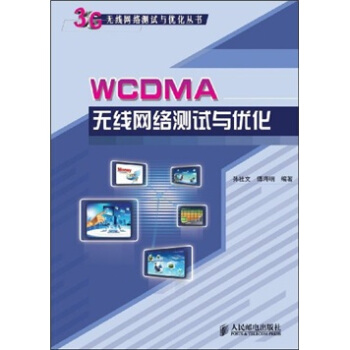
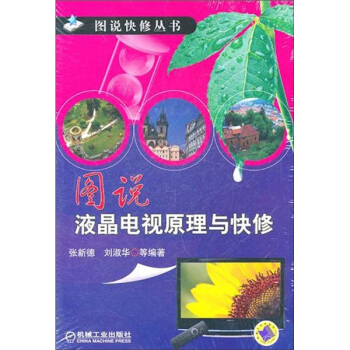
![納米科學進展係列·納電子學:納米綫 分子電子學及納米器件 [Nanoelectronics:Nanowires,Molecular Electronics,and Nanodevices] pdf epub mobi 電子書 下載](https://pic.tinynews.org/10855770/5398fcadN62bd6283.jpg)
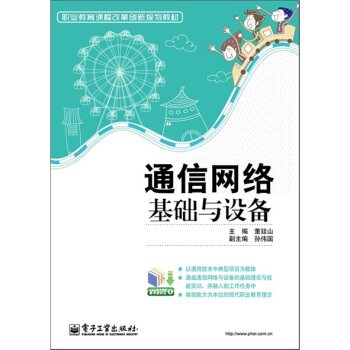
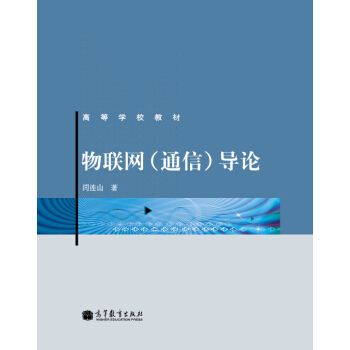
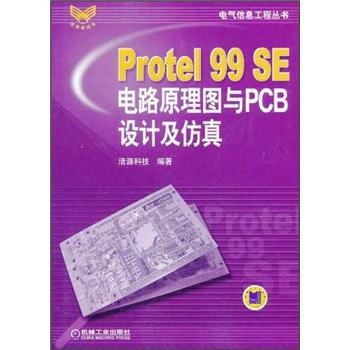
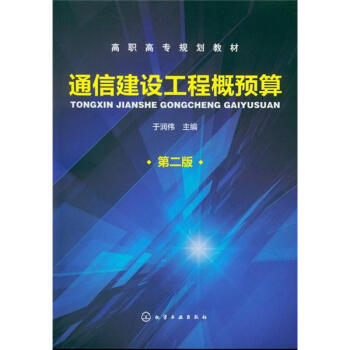
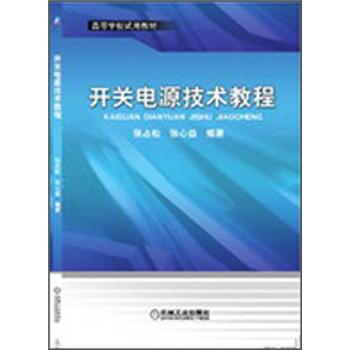
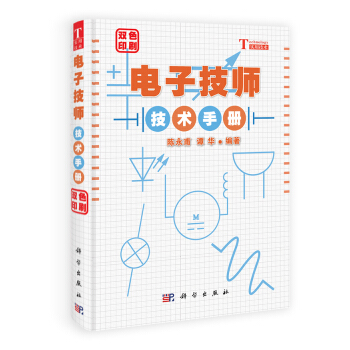
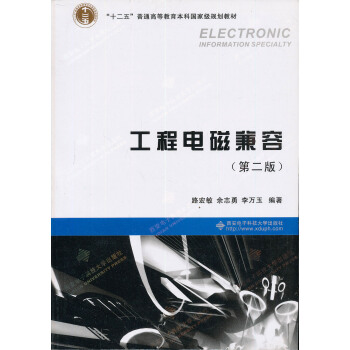
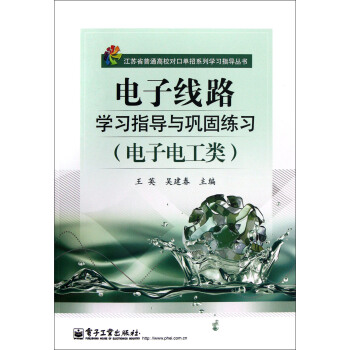
![工業和信息化普通高等教育“十二五”規劃教材立項項目:模擬電子技術 [Analog Electronic] pdf epub mobi 電子書 下載](https://pic.tinynews.org/11162673/rBEHZlD8xhcIAAAAAAew95jB3tUAADshgEMak0AB7EP638.jpg)
